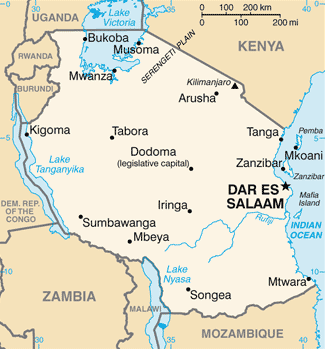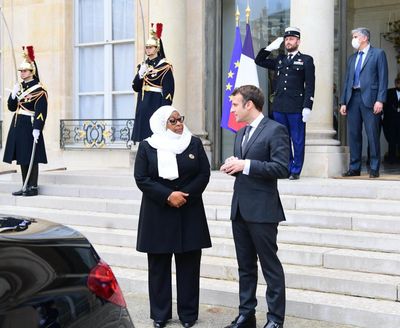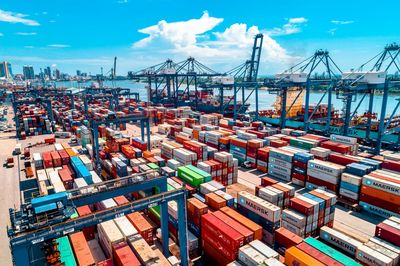Reports & Materials
Find information on Trade and Investment in Tanzania, globally and by sector of activity.
Access to contentOfficial name: United Republic of Tanzania
Official languages: Swahili / English / Arab (in Zanzibar)
Area: 947,300 km²
Legislative capital: Dodoma
Largest city: Dar es Salaam
Population: 65,497,748 million
Population growth: 3%
Literacy rate: 82%
GDP: $ 75.71 billion
GDP growth (annual %): 4.6%
Annual inflation: 4.4%
Current president: Samia Suluhu Hassan
Currency: Tanzanian shilling (TZS)
All figures come from the World Bank website.

Under Samia Suluhu Hassan’s presidency, dialogue between France and Tanzania has intensified. In October 2021, the Minister of foreign trade Frank Riester visited Tanzania, a first in 7 years for a French Minister. The next year in February, the President Samia Suluhu Hassan came in France, where she signed several bilateral agreements and met representatives of MEDEF International. Lastly, the new Minister of foreign trade Olivier Becht came in Tanzania in February 2023 for the Tanzania-EU Business Forum.


Tanzania has an ideal location on the Indian Ocean, with 1424 kilometers of coastline and six landlocked nations surrounding the country. Tanzania is thus a true gateway, and it intends to strengthen this advantage through investments in large-scale transportation projects. On the coast, work will soon begin on the Bagamoyo port, which is expected to become the largest port in East Africa before Dar es Salaam at the end of the construction in 2033. Tanzania is also building a Standard Gauge Railway from Dar Es Salaam to Kigali (Rwanda), Bujumbura (Burundi), and Goma (DRC) to connect landlocked countries to the Dar Es Salaam port. The other main country’s railway, the Tazara (Tanzanian Zambian Railway Authority), which connects Zambia to Dar Es Salaam port, is expected to be upgraded in the coming years.
Tanzania's economy has been upgraded from low to lower-middle income classification by the World Bank in 2020, indicating that Tanzania's Gross National Income (GNI) exceeded the lower-middle income threshold of $1,036. This was a crucial component of the Vision 2025 strategy, which was developed in 1999. The new target is to achieve upper middle-income status by 2050.


It is Tanzania's first economic sector, accounting for 26% of GDP and 65% of labor force. Through the Vision 2025 plan or the ASDPII programme, and with the help of international funders, the country invests in agriculture to enhance productivity and added value, by developping processing plants for instance.
The figures come from the Monthly economic letter from French Treasury.
Tanzania's mining industry has traditionally been dominated by gold production, as the country has the third largest reserves in Africa. However, in the last decades exploration has found that the country has a high potential for critical minerals such as nickel and rare earth metals (neodymium, praseodymium,...). Tanzania's mining potential is far from being fully utilized, as seen by new mining projects such as the Kabanga nickel mine. Sector’s contribution to GDP has risen from 3.4% in 2015 to 7.3% in 2021, and the government expects the sector to contribute 10% to GDP by 2025.


During the last two decades, the manufacturing sector has contributed 8% of GDP on average. Food and drinks account for about 60% of the value added in the sector and 50% of manufacturing jobs. Cereals, flour, and dairy products constitute the principal products. Non-metallic mineral products (about 10%), chemicals, and textiles (both 5%) are the other major subsectors. Manufacturing is planned to account for 8.5% of GDP in 2025/2026, according to the National Five-Year Development Plan.
The figures come from Growth Diagnostics and Competitiveness Study of the Manufacturing Sector in Tanzania (2023).

Find information on Trade and Investment in Tanzania, globally and by sector of activity.
Access to content